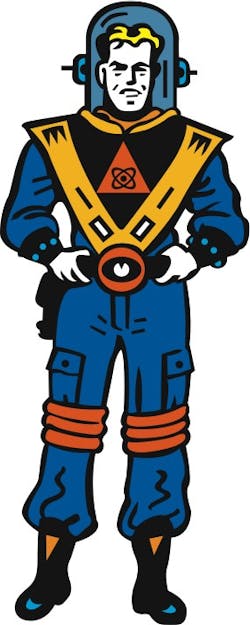Lowly Sensor Becomes Error-Proofing Hero
Poka yoke, a Japanese term used in the Toyota Production System meaning mistake-proofing or error-proofing, applies to the role discrete sensors now play in quality control, says Tom Rosenberg, industry group manager for error-proofing sensors at Balluff Inc. (www.balluff.com), Florence, Ky. Once, sensors were used only to improve process speed and efficiency. “But using sensors for poka yoke is a profound change in their use,” Rosenberg observes. “What we’ve now found is that the lowly sensor is the principal production-process tool that can be used automatically to improve product quality.” The ultimate goal of error-proofing sensors? Catch the error at the workstation on a production line, so it’s not on the finished item, adds Rick Bondy, field applications manager for Sick Inc. (www.sickusa.com), another sensor vendor, based in Minneapolis. Bondy notes that quality means meeting consumers’ specifications.
One quality-improvement area in which Rosenberg sees fast growth for error-proofing sensors is for inline vehicle sequencing operations—for example, selecting the correct seat—on automotive production lines. Lasers are big now, he adds. “They’re economical, providing a lot of accuracy for the cost. Also, the industry has been moving to Class I lasers, since there are no dangers to operators’ eyes.”
For vision devices, in general, end-users have the choice between low-end standard sensors and high-end vision systems. Having their own light source, standard sensors are in the $100-per-device range and are well known, having no issues with their use, Rosenberg says. Besides lasers, other types of standard sensors include photoelectric, proximity, capacitive and true-color.
Vision systems, however, are typically more expensive, have more functions and may be more complex. “It’s important [for end-users] to understand the production line in order to know when to use either,” Rosenberg states. “Obviously, you want to use a sensor whenever possible. Why? It’s cost driven.”
End-users should consider three things when deciding on a standard sensor or vision system, Rosenberg believes. The first is whether the parts to be examined are well-fixtured; that is, the part is on a pallet or at an inspection station and correctly positioned at either. “If so, you can use a sensor,” he counsels. The second is having manageable inspection points per part. “The decision is a function of the size of the part,” he notes. The third is knowing the location of the part’s details. “If you know your part—if the thing to be measured in always in the same spot—then use a sensor,” Rosenberg advises.
One type of vision application is pick-to-light, says Bob Arger, Toronto-based automotive business manager for vision and sensor vendor Banner Engineering Corp. (www.bannerengineering.com), Minneapolis. “It’s often used in the case of final assembly of a vehicle, engine or transmission.” As the part being assembled travels down the production line, Arger says there’s a way to communicate to the system what part is needed next. “And the system then lights the appropriate bin from which the operator picks the part. It doesn’t just verify that the correct part has been selected, but also that it’s picked in the proper sequencing.”
Some might argue that this application is not true error proofing. But, Arger explains, “the sensor also senses that the operators has put his hand into the bin. And the sensor gives feedback that he did pick the part.”
Bondy adds three things that end-users should consider when selecting error-proofing sensors: performance, repeatability of measurement and cost. “If the wrong sensor is used, there is loss of production and efficiency,” he notes. “That’s why we have to understand the acceptable tolerances of error-proofing that end-users can live with.”
C. Kenna Amos, [email protected], is an Automation World Contributing Editor.

